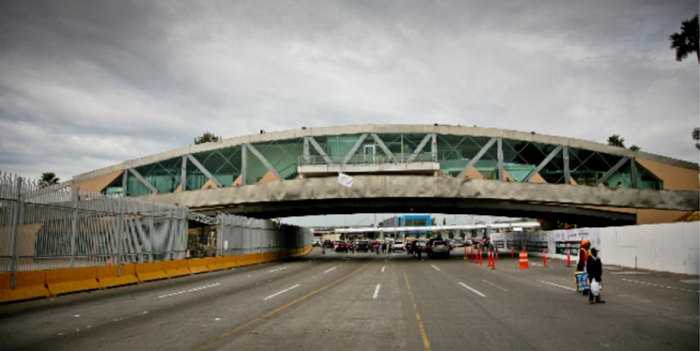|
SOHO Plays Key Role as Advocates of our Regional History
November 2016
By Maria E Curry
 November is a special month for celebrations. The Day of the Dead in Mexico connects us with our ancestors when we make altars and visit the cemeteries. We also celebrate Thanksgiving in border cities influenced by our neighbors and relatives in the U.S. I feel blessed to be in a region where there is so much heritage created by people who come from many countries and end up in Tijuana or San Diego, enriching these cities with their culture and history. November is a special month for celebrations. The Day of the Dead in Mexico connects us with our ancestors when we make altars and visit the cemeteries. We also celebrate Thanksgiving in border cities influenced by our neighbors and relatives in the U.S. I feel blessed to be in a region where there is so much heritage created by people who come from many countries and end up in Tijuana or San Diego, enriching these cities with their culture and history.
I want to thank all the people who have contributed to making my life more meaningful as a border historic preservationist. My special thanks go to my peers in SOHO and all the preservation advocates in Baja California and California. They discovered me and let me discover them when I arrived in 1994 as another migrant with the desire to share my skills in the protection of cultural resources. I was working as a scholar for El Colegio de la Frontera Norte when Bob Broms, the president of SOHO, called me to attend a conference on regional issues in historic preservation. After that fascinating experience, I joined SOHO and many other preservationists from Tijuana, Ensenada, Tecate, and Mexicali in the protection of endangered buildings. Many of the questions I had about history, architectural styles, building techniques, and approaches to restoration were answered by experts that SOHO had at hand and who were always willing to help me in my research.
Historic preservation can make people of neighbor nations understand each other better by sharing their efforts in saving a common past. The two Californias were part of a prehispanic and colonial common history. Today, migration, trade, and tourism continue to create experiences and memories in the lives of the people. Border populations move from one city to the other to work, shop, see a doctor, visit places, or visit family. This constant flux in the most visited border in the world allows people to share ideas, culture, technology, and art in a unique way. Many historic buildings in Baja California were built by master architects from California, including the Agua Caliente Casino, the Jai Alai Palace, and the Tecate Depot. Hundreds of houses were moved from San Diego to Tijuana, Tecate, and Mexicali at the beginning of the 20th century, creating an important historic building stock.
For over 20 years, I have shared the same interests as SOHO in looking at the border region as an area that unites two nations through its history. When the SS Catalina ended up in Ensenada, we were able to fight for its preservation for seven years through a Mexican and U.S. coalition led by SOHO, with Mexico ICOMOS (the International Council on Monuments and Sites) and preservationists from Ensenada and California. We placed the Tecate Depot on the Great American Stations most endangered list with the support of SOHO and the Pacific Southwestern Railroad Museum. The depot was abandoned and threatened with demolition. Thanks to the nomination, the Mexican federal government listened to our request and remodeled it.
Over the years, SOHO has placed Border Field Park, the SS Catalina, the Tijuana Bullring, the Bodegas de Santo Tomás, and the Tecate Depot on its Most Endangered List, which has had a great impact on Mexican politicians who then recognized that these are valuable resources. Recently, SOHO got involved in the efforts to preserve La Puerta Mexico, a bridge located in the Tijuana border crossing with an outstanding shell design. La Puerta was demolished, but the letters that SOHO sent to Mexican officials, including one to the president of Mexico, created an important precedent that could lead to the preservation of other structures and sites by creating awareness that border history is important for many people.
Although we have not always succeeded in saving our border heritage because of the complexities of some cases, we have always made advances in educating others and ourselves in what historic preservation is about in this era of globalization. And because of that, as well as all our preservation successes, I want to thank all the people who advocate for our regional history.
|
2025
2024
2023
2022
2021
2020
2019
2018
2017
2016
2015
|

